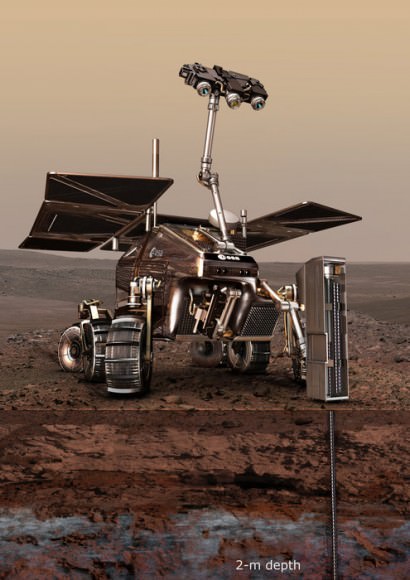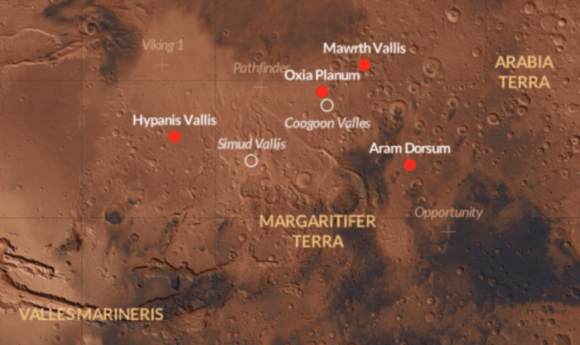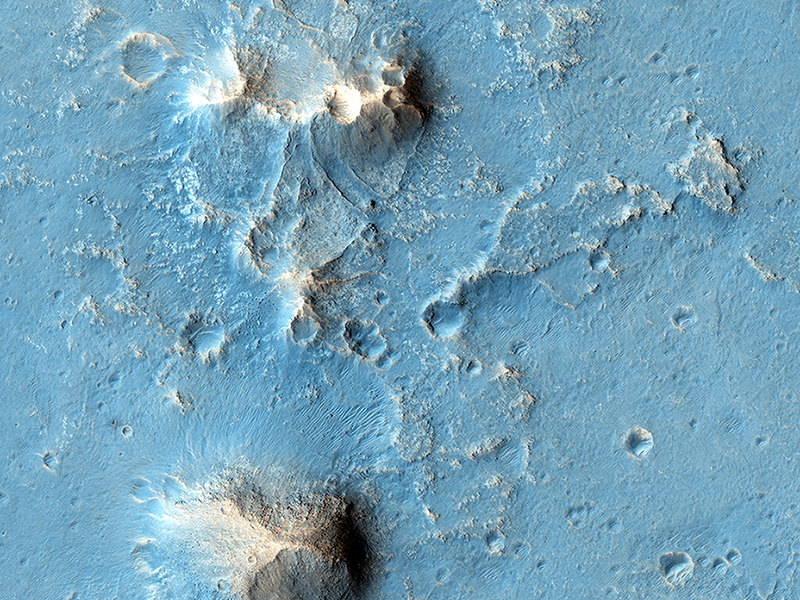The joint ESA and Russian ExoMars rover’s top priority is to search the Martian surface for signs of life, past or present, and scientists think they know just the spot where – if life ever existed or exists on Mars – it might be found. Today the ExoMars team announced that the equatorial region named Oxia Planum has been recommended as the primary candidate for the landing site.
“Our preliminary analysis shows that Oxia Planum appears to satisfy the strict engineering constraints while also offering some very interesting opportunities to study, in situ, places where biosignatures might best be preserved,” said Jorge Vago, ESA’s project scientist.

The rover is currently scheduled to launch in 2018 and land on Mars in 2019, but the timetable is still under review, depending on any issues with construction of the rover. While the final landing site won’t be selected by both ESA and Roscosmos until six months before launch, this recommendation will weigh heavily in the decision.
Some of the priority requirements for the landing site is that is must show abundant morphological and mineralogical evidence for long-duration, or frequently reoccurring water activity, and that there should be numerous sedimentary rock outcrops.
From orbital study by previous missions, Oxia Planum is known to contain clays, and there appears to be remnants of a possible fan or delta, as seen in the image above from the HiRISE camera on the Mars Reconnaissance Orbiter. This would be one of the potential science targets.
The site selection process has been under way since late 2013, when the science community was asked to propose candidates. In October 2014, four candidates were chosen by the Landing Site Selection Working Group. Now this month, October 2015, the same group met to determine two candidate sites that conform best to both the engineering constraints of descent and landing, and the best possible scientific return of the mission. But their preference for now is Oxia Planum. The team will continue to debate the merits and safety of the proposed sites.

ESA said that all four sites that have been under study – Aram Dorsum, Hypanis Vallis, Mawrth Vallis and Oxia Planum – show evidence of having been influenced by water in the past, and are likely representative of global processes operating in the Red Planet’s early history.
Additionally, all locations offer the opportunity of landing at a scientifically interesting site or finding one within a 1 km drive from the touchdown point, with numerous targets accessible along a typical 2 km traverse planned for the mission of 218 martian days (each 24 hours 37 minutes).
The ExoMars mission is a dual mission with one part launching in 2016 (the Trace Gas Orbiter plus an Entry, Descent and Landing Demonstrator Module) and the rover tentatively scheduled to launch in 2018. As final site selection comes closer, the scientists involved with the mission are anticipating the mission. Professor Andrew Coates who leads the ExoMars PanCam team for the 2018 rover tweeted this today:
ExoMars will land on clays in old region – possible delta – great place to drill, can't wait for PanCam images https://t.co/Hi0gHk46z1
— Andrew Coates (@PlanetAndrewC) October 21, 2015
Further reading: ESA


I’m guessing the sites just discovered with probable brine flows were, A) discovered too late in the selection process and/or B) too challenging topographically to meet their strict criteria?
Seems easy enough to find water or evidence of life. Just come into Mar high or low to be captured into a polar orbit and then you have the whole planet as a possible target. Land where you see ice coverage. Take samples. And document a new discovery. This crap about being near the equator is going to strike out again.
I agree with BlackWolfStanding. You go where the water is today.
1) At the poles where there is permanent ice.
2) At one of thesr crater rims where they see evidence of water flow.
3)At the deepest part of Valles Marineris and in a visible river channel.
It almost seems like they do not want to be in a place with abundant water or find life.
There is more life in the forest or the sea than in the desert.
I think none of these mission planners past grade one.
Unbelievably stupid.
They would probably go out to look for signs of life in the crater immediately after an atomic bomb has been dropped and wonder why there are no animals or plants around.
You have to admire their skill at getting paid to have their jobs and make billions on wasted projects. 5 stars for that. Politicians of the highest caliber. Keeping the project rolling and the dollars flowing from the people to their bank accounts. 5 stars. Results achieved; zero. Results are not necessary.
Get some people involved that actually do field work, because these teams would not recognize the diffence between a Redwood and a braided stream environment.
Great business skills for these exploration teams. Scientific skills; zero.
How can one use the great engineering skills to get to another planet and then deliberately look in the wrong places?
Chris Landau(geologist)
Hellas Planetia is the place to look for life! Think geothermal springs created by deep impact fractures.. Now if only we could figure out a way to land there.